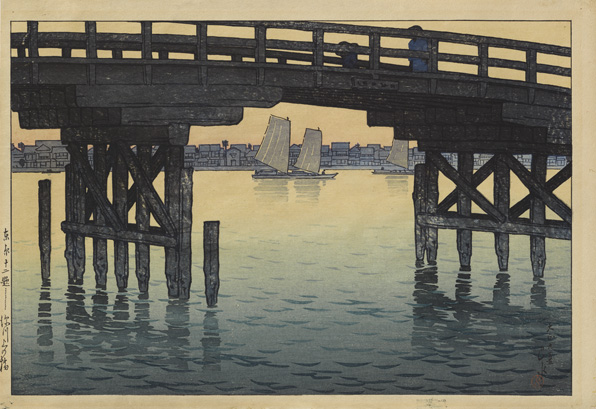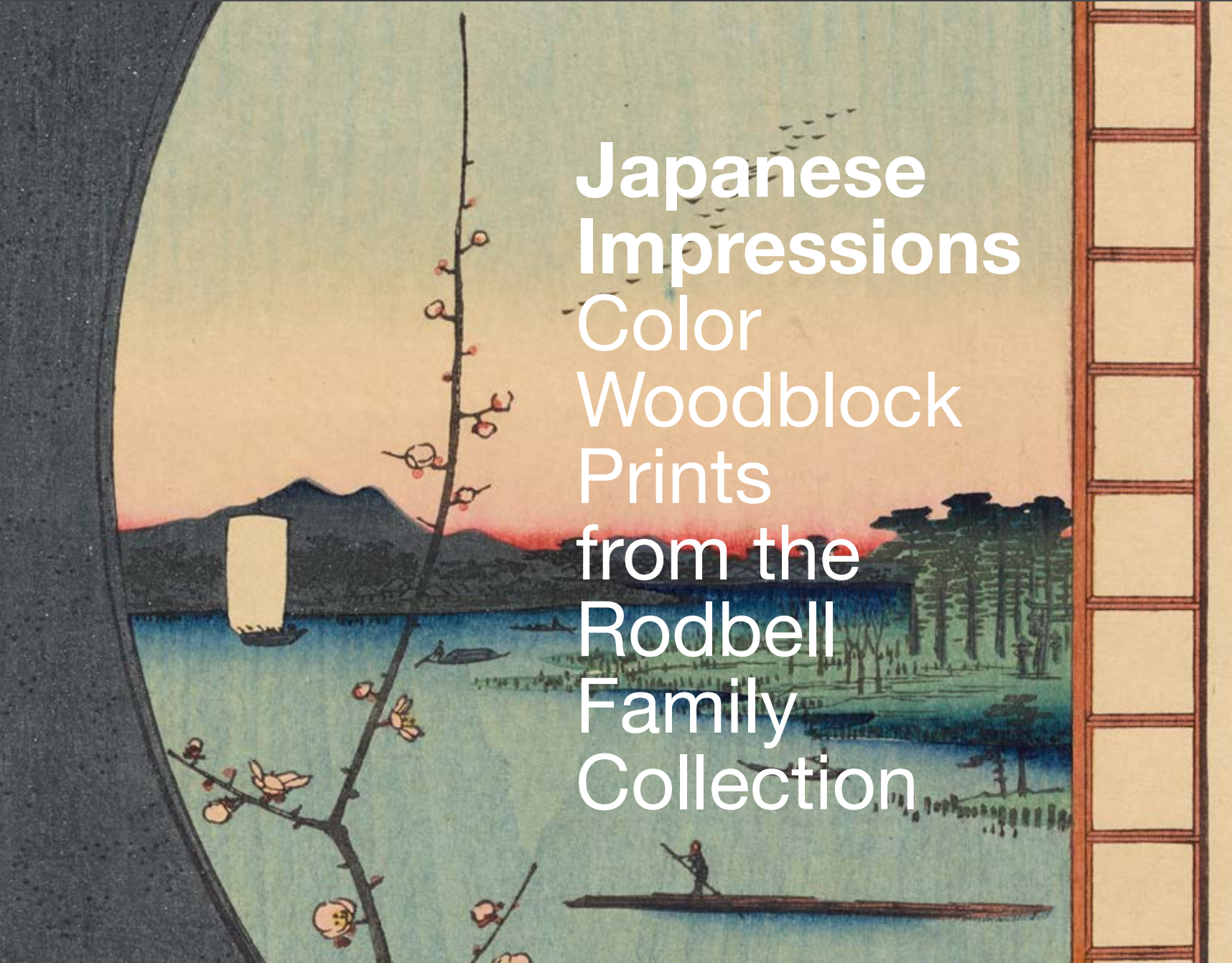
DECEMBER 10, 2016–APRIL 2, 2017
KAWASE HASUI
Kawase Hasui (Japanese, 1883-1957)
The Kaminohashi Bridge in Fukagawa, Tokyo, from Twelve Scenes of Tokyo, 1920
Color woodblock print
Gift of the Rodbell Family Collection, 2014.16.21
Kawase Hasui was among the most prolific printmakers of the shin-hanga (new print) movement. Though trained as a painter, Hasui was inspired to train in printmaking after seeing Itō Shinsui’s series Eight Views of Ōmi. Like many of his artist peers, Kawase Hasui had a strong relationship to the publisher Watanabe Shōzaburō and worked almost exclusively with him until the artist’s death in 1957. Kawase Hasui’s color woodblock prints resulted from drawings he made during extensive travels throughout Japan. In many ways his work was a hybrid of Western-influenced realism and an admiration for Japanese landscape and customs.
Kawase Hasui, Itō Shinsui, and Yoshida Hiroshi were practitioners of the shin-hanga movement that blossomed in the 1920s and 1930s. At the turn of the twentieth century, Japan’s heightened interest in Western culture was countered by an increased awareness of the value of many traditional aspects of Japanese culture that some felt were being neglected. The shin-hanga movement grew out of this sentiment and provided a means of combining traditional printmaking techniques with Western aesthetics. Like the ukiyo-e prints of the previous centuries, shin-hanga was a collaborative art in which the artist, woodblock carver, and publisher each played essential roles in the printing process. But while the artists depicted themes similar to ukiyo-e such as actors, birds and flowers, beautiful women, and landscapes, they also incorporated Western aesthetic principles of realism and perspective.


